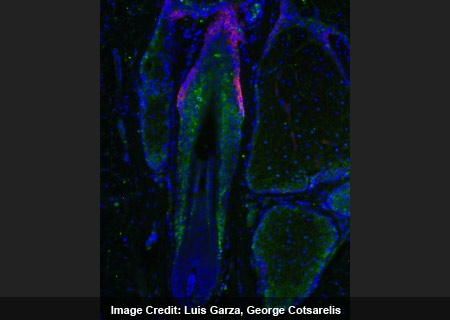It’s apparently been noted that male pattern baldness affects 8 out of 10 men under 70 years of age. News from the Perelman School of Medicine at the University of Pennsylvania reveals that researchers have identified the male pattern baldness inhibitor.
Accordingly, an unusual level of the Prostaglandin D2 protein was found in the bald scalp of male subjects going through this type of hair loss. The new research intones that the PGD2 prostaglandin and its 15-dPGJ2 derivative restrain hair growth. This inhibition that’s been linked to PGD2 is said to take place through a receptor termed GPR44. The last mentioned is touted as a therapeutic target for androgenetic alopecia in men as well as women manifesting hair loss and thinning.
“Although a different prostaglandin was known to increase hair growth, our findings were unexpected, as prostaglandins haven’t been thought about in relation to hair loss, yet it made sense that there was an inhibitor of hair growth, based on our earlier work looking at hair follicle stem cells,” expressed George Cotsarelis, MD, chair and professor of Dermatology, and senior author on the studies.
The team looking into this study examined scalp tissue from balding and non-bald spots from men with male pattern baldness and then used mouse models to back up the discovery. It has been noted that the amount of PGD2 was 3 times higher than what was found in comparative haired scalp of men with androgenetic alopecia. The addition of the prostaglandin to hair follicles was noticed to shorten hair quite noticeably.
This study covering the identification of the male pattern baldness inhibitor can be found in Science Translational Medicine.

